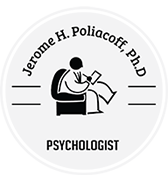From the New York Times: About a year into the pandemic, Marcela Rafea began waking up consistently at 3 a.m., her mind racing.
She would creep out of bed and tiptoe into the living room, where she would meditate, try a few yoga poses and open the window to hear the leaves rustle, the cars rush by and the dogs bark.
Then, at 6 a.m., she crawled back into bed and would sleep again until her youngest child woke her for the day at 7 a.m.
“I needed that night wakefulness to make up for the time that I didn’t have for myself,” said Ms. Rafea, a 50-year-old photographer and mother of three who lives in Oak Park, Ill.
Unbeknown to Ms. Rafea, she had naturally reverted back to a sleep cycle that was believed to be standard in multiple cultures in the late Middle Ages through the early 19th century.
During that time, many people went to sleep around sundown and woke three to four hours later. They socialized, read books, had small meals and tried to conceive children for the next hour or two before going back for a second sleep for another three to four hours. It was only when artificial light was introduced that people began forcing themselves to sleep through the night, said A. Roger Ekirch, a professor of history at Virginia Tech and the author of “The Great Sleep Transformation.”
Now that many people are making their own schedules, working from home and focusing more on self-care, there has been a return for some to the idea of a segmented sleep cycle — voluntary and, given the stress levels of the last two years, not.
So are we simply reverting to our long forgotten, natural sleep cycle? And could this be the cure for those deemed middle-of-the-night insomniacs?
Professor Ekirch, who has studied segmented sleep for the past 35 years, said there are more than 2,000 references to it from literary sources: everything from letters to diaries to court records to newspapers, plays, novels and poetry, from Homer to Chaucer to Dickens.
CLICK HERE to read more.


